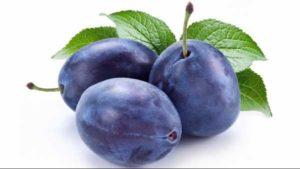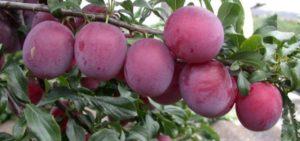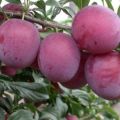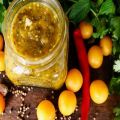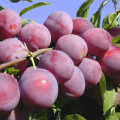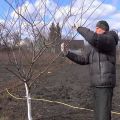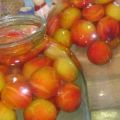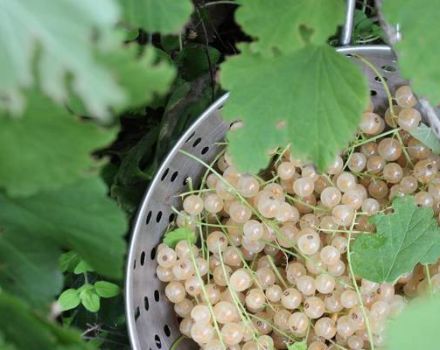Causes and treatment of diseases and pests of cherry plum, the best ways to deal with them
Cherry plum is a fruit tree with delicious plum-like fruits. The fruits of the tree are good for health, have unique properties that are used in cosmetology, various diets and baby food. The plant is unpretentious, has strong immunity and high yield. But like any tree, cherry plum can hurt. What diseases and pests are dangerous for cherry plum, how to deal with them and what measures to take to preserve the harvest of healthy fruits?
Cherry plum diseases and their treatment
Plum and cherry-plum are related plants, therefore their diseases are similar and there are a lot of them. Timely identified ailments can be treated, the harvest can be saved.
Hole spot
Clasterosporia or perforated spotting is a dangerous disease of dessert cherry plum of fungal origin. The disease affects only stone fruit plants. The causative agent is a fungus from the genus Clasteroaporium carpophilum. The disease develops rapidly in conditions of high humidity, spreads rapidly and, with the help of the wind, can spread to neighboring trees within a few days.
Symptoms of cherry plum disease with perforated spot:
- The appearance of dark brown blotches on the leaves, which eventually disappear, a hole forms in their place.
- Red border of leaves.
- The formation of a thick yellow sticky substance on the branches, trunk and fruits of the cherry plum.
The harm from clasterosporium disease is enormous: productivity decreases, some of the ovaries fall off, the fruits are deformed, trees stop growing.
If these signs are found, it is necessary to treat the diseased trees with chemicals "Kaptan", "Tsineb", "Ftalan". The causative agent of perforated spot can withstand temperatures up to 0 FROM.
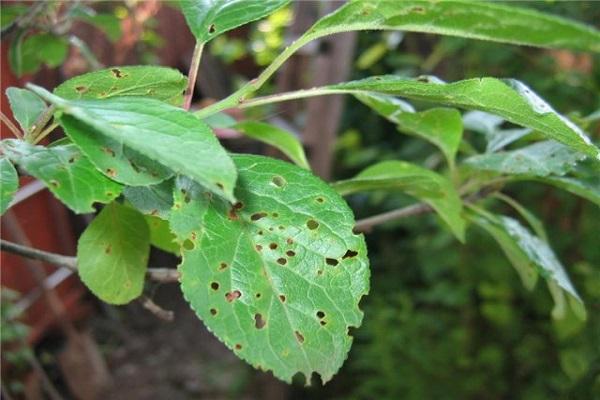
Milky shine
In spring and autumn, with temperature changes in conditions of high humidity, stone fruit plantations are exposed to another common fungal disease - milky sheen.
The main sign by which you can immediately recognize the disease is a change in the color of the leaves from a green color to a silvery-white tint. Bubbles form on the surface of the leaves. Cherry plum varieties with medium or low frost resistance are especially susceptible to disease.
For treatment, a solution of copper or iron sulfate is used, the trunk and branches of the plant are washed with it, the damaged leaves are removed and burned.
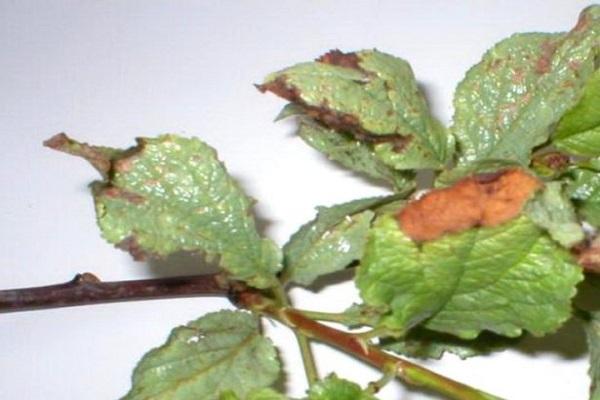
Moniliosis
Fungal infection caused by fungi of the genus Monilia cinerea. Moniliosis affects cherry plum in two ways:
- monilial burn;
- fruit rot.
The spring form of moniliosis proceeds in the form of a burn, develops quickly and overtakes the cherry plum in the stage of a set of buds and flowering. Cherry plum leaves and flowers suddenly dry up and turn brown.
Attention! The signs of moniliasis are often confused with the effects of spring frost. An important difference is that with this fungal disease, flowers and leaves do not fall from trees.
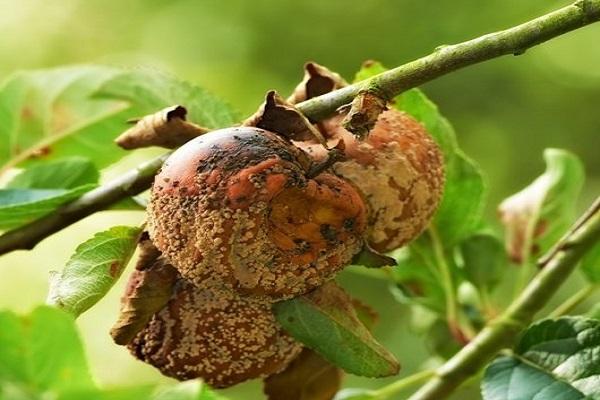
The disease in the form of fruit rot develops in early autumn, when it is time to harvest. The focus of the infection is cherry plum fruits. They begin to dry out, acquire a "burnt" appearance, and over time, sporules of a gray fungus appear on the fruits.
If the infection is started, fungi will begin to invade the tree trunk, which can crack. Cherry plum stops growing, loses energy, other diseases join moniliosis. Keeping quality of "surviving" fruits decreases.
From folk remedies in the fight against fungus, spraying of infected plants with mustard powder is used: 80 grams of dry mustard per 10 liters of water. Of the chemical preparations, Fitolavin proved its effectiveness. Spraying is carried out during the flowering period.
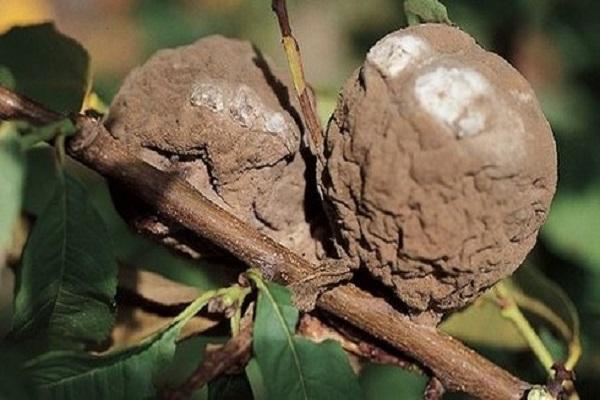
Marsupial disease
Plum pockets or marsupial disease is a fungal disease of stone fruits that can cut yields in half. The fungus affects the fruit, they are deformed and take on an elongated shape. The bone is not formed. The fruit remains green, covered with a white coating, the fruit is inedible. The disease then spreads to other parts of the trees.
All diseased fruits must be removed from trees and burned. In the spring, the bushes are sprayed with Bordeaux liquid before flowering or the Horus fungicide is used. The treatment can be repeated immediately after flowering.
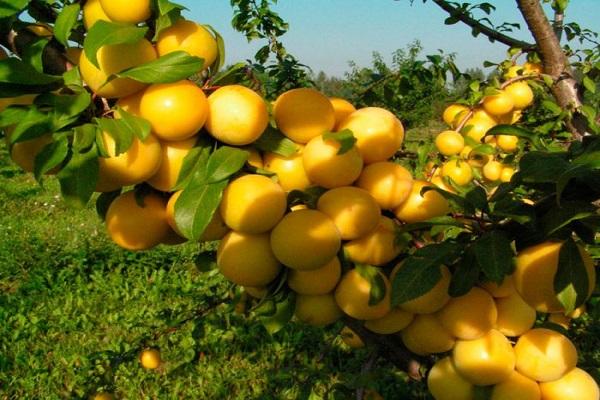
Coccomycosis
Fungal disease affecting the leaf blades of cherry plum. Outbreaks of infection begin in mid-June. The leaves of the trees are covered with small red-brown specks, the number of which is constantly increasing, they begin to connect with each other, then the leaf turns yellow and falls off. On the back of the affected leaf, a white, rough bloom can be seen.
In the southern regions, the disease is rare, the fungus does not tolerate high temperatures, but in conditions of high humidity and air temperatures from +18 From to +23 C is spreading rapidly.
For the prevention of coccomycosis, it is recommended to treat tree trunks with lime mortar in spring and autumn. In advanced cases, chemicals are used: "Horus", "Topsin-M".
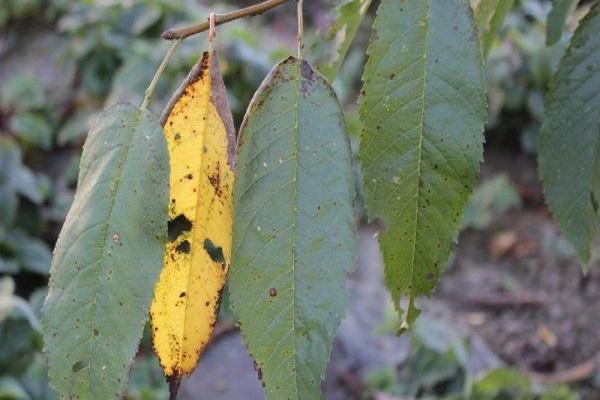
Cherry plum pests and ways to deal with them
In addition to fungal diseases, fruit plantations can be attacked by insect pests, which cause huge damage to the future harvest.
Brown fruit mite
A pest that can completely destroy the cherry plum tree. It feeds on plant juices, disrupts the process of photosynthesis and water balance in the leaves.
The size of an adult is less than a millimeter. Insects lay eggs in the bark of trees, where they hibernate. In the spring, when the cherry plum begins to grow buds, the insect colonies wake up. During the full vegetation cycle of plants, the mite creates 5-6 generations.
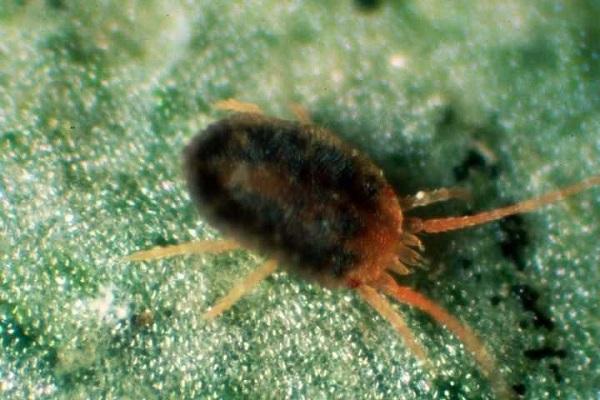
The brown fruit mite avoids direct sunlight, colonies are placed under the lower branches.
The easiest way to destroy pests is in early spring. The bark of trees should be cleaned and covered with a lime mortar. Spraying with biological or chemical agents can be carried out:
- "Fufanon";
- Fitoverm;
- "Neoron".
On a note! The best treatment effect is achieved during the hatching period of the larvae from the eggs.
After the insects are destroyed, it is important to feed the trees to replenish the strength taken by the ticks.
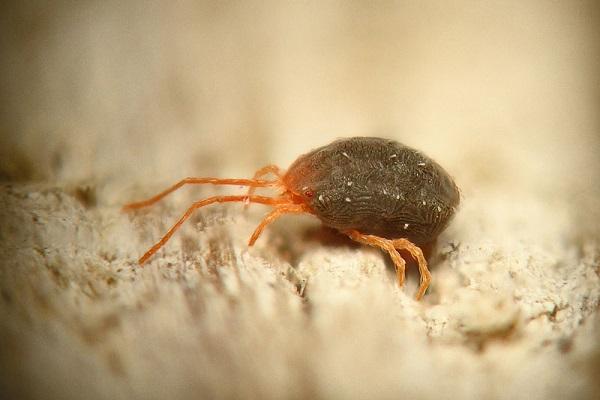
Slimy sawfly
The black larva, which looks like a leech, is a slimy sawfly. It eats leaves, turning them into a skeleton. The female pest reaches 6 millimeters in length, males are smaller in size than females.Reproduction of these insects occurs with the formation of white pupae.
Cherry plum, affected by a slimy sawfly, appears to be withered, the foliage seems less dense. If the degree of infection is small, you can do with folk remedies:
- Spray trees with chamomile and bitter wormwood infusion once a week for 3 weeks. The procedure should be carried out from the moment the buds are formed.
- At the time of plant buds and during the flowering period, spray the cherry plum with a solution of laundry soap: dilute half a standard piece with 10 liters of water.
From biological products fit "Fitoverm" and "Lepidocide". It is not difficult to identify the pest; it is necessary to regularly inspect the trees.
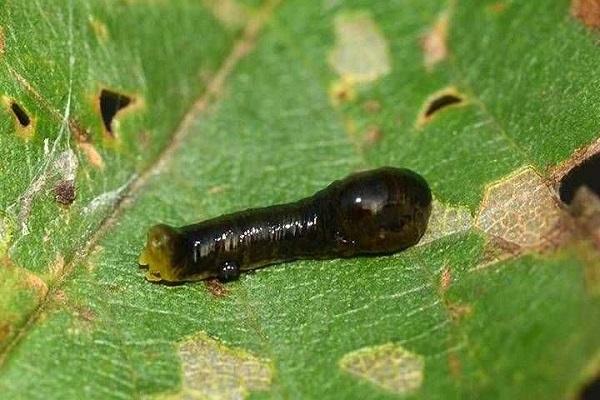
Yellow plum sawfly
It is a thick white caterpillar that feeds on the fruits of fruit trees. In the form of flying insects, it does not pose a danger to plants, feeds on pollen.
Caterpillars completely eat away the seeds and pulp of the fruit. The pest hibernates in the form of a pale green pupa. Due to the actions of voracious larvae, the quality and quantity of the crop is significantly reduced.
From pests, cherry plum is treated with "Fufanon" and "Novaktion".
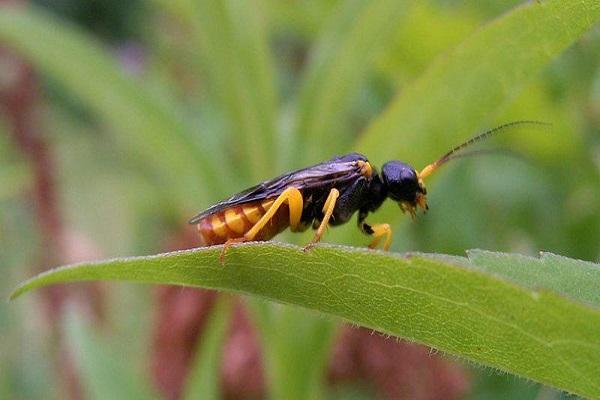
Eastern moth
A dangerous pest from the family of leaf rollers that can completely destroy the crop. In the form of an adult butterfly, it does not harm plants. Larvae - caterpillars feed on cherry plum shoots, making moves in them, can damage the fruits. The pest hibernates in the form of pupae on a tree and in the ground in a near-trunk circle. Because of this feature, when fighting a pest, the near-trunk space is treated. Insect control methods:
- Cleaning of fallen leaves and bark cleaning.
- Application of insect trapping belts during egg laying.
- Treating trees with a solution of edible salt immediately after flowering stops.
The moth can be defeated without the use of chemicals. The pest spreads quickly, action must be taken quickly.
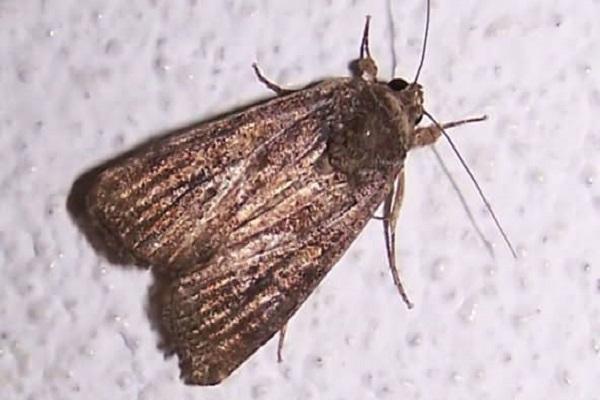
Plum moth
A pest from the leafworm family. For cherry plum, caterpillars of a pale pink color, which eat the stalks and fruits, are dangerous. The larvae eat the flesh and damage the bone in which the excrement is deposited.
Control methods are the same as with the eastern moth.
Plum aphid
Aphids act like a tick - they suck up nutrients from plants. From the actions of small insects, you can lose not only the harvest, but also the entire orchard.
The first sign of infection is leaf rolling on trees. If you take a closer look, you can see colonies of black insects completely covering the leaf plates - cherry plum scab.
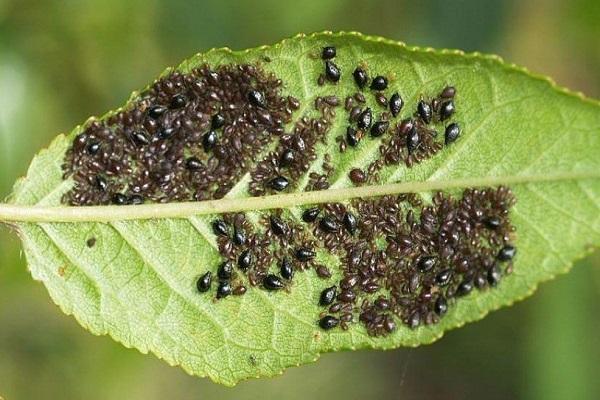
A folk prophylactic against aphids for stone fruit crops is the planting of neighboring plants with a pungent odor: dill, parsley, mint, coriander. From chemical preparations "Aktara", "Fufanon", "Confidor" will help.
Subcortical leaf roll
The pest caterpillars are dangerous. They make moves in cherry plum wood. Trees begin to lag behind in growth, skeletal branches dry out, and yield decreases sharply.
The damaged branches must be removed and burned. Butterflies are caught with pheromone traps. Insecticides are used against the larvae.
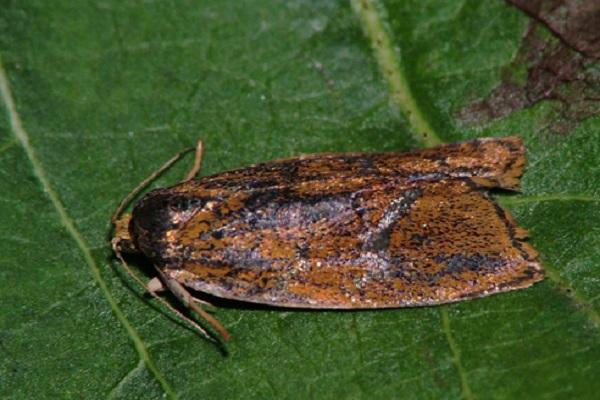
Prevention of diseases and pests
The list of pests and diseases that can affect cherry plum plantations is huge. To avoid dangerous ailments and uninvited guests, they carry out prevention:
- Lime-bleaching of tree trunks in early spring and autumn after harvest.
- Feeding plants with organic and mineral fertilizers.
- Planting aromatic herbs next to trees: dill, lavender, mint.
- Spraying cherry plum with soapy water or a solution of sodium chloride during the flowering period and immediately after it.
- Regular inspection of cherry plum plantations.
You can cope with any disease and pest, the main thing is not to delay treatment and take the right measures. Healthy plantations will surely reward gardeners for their work with an abundant harvest of healthy fruits.
